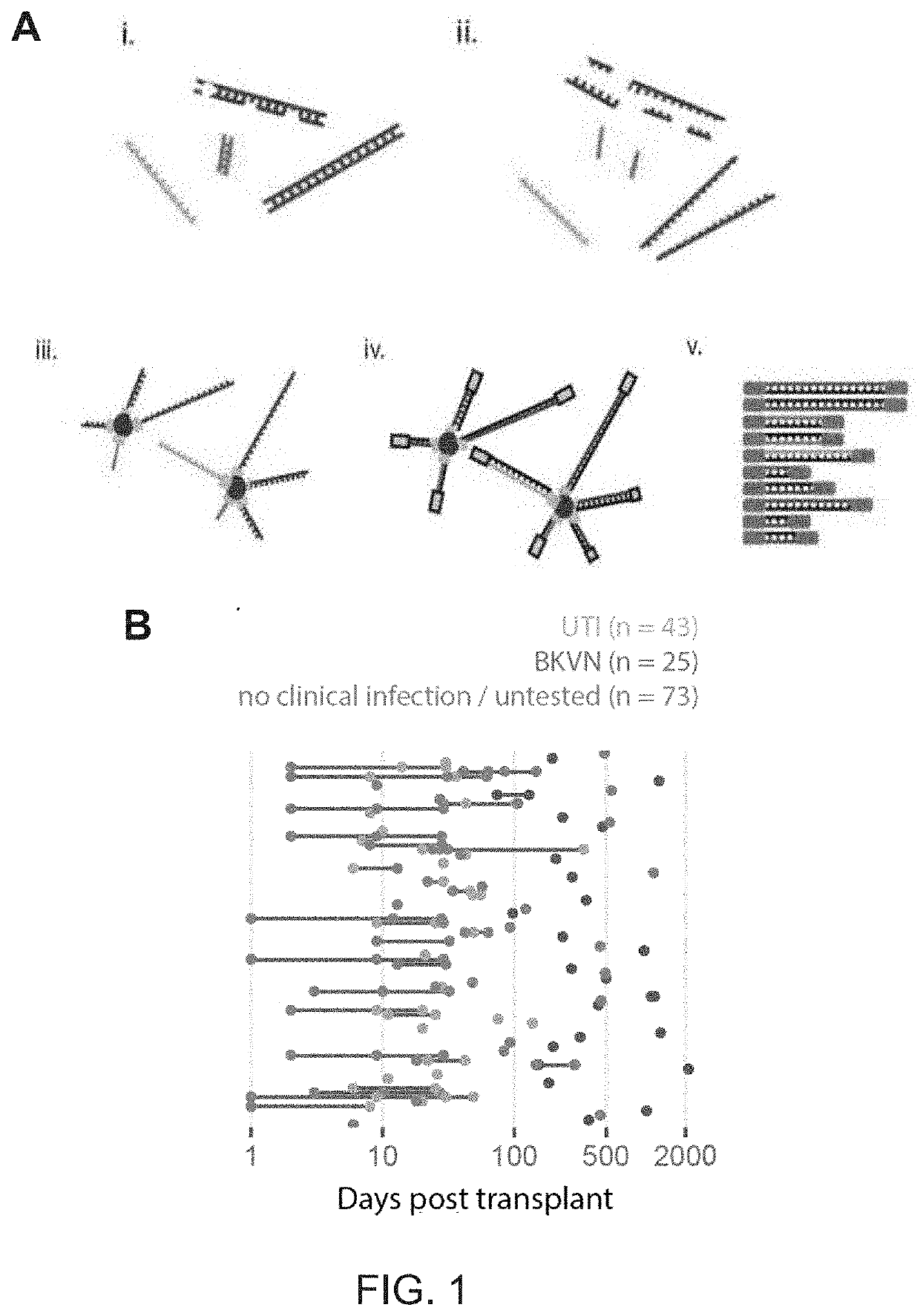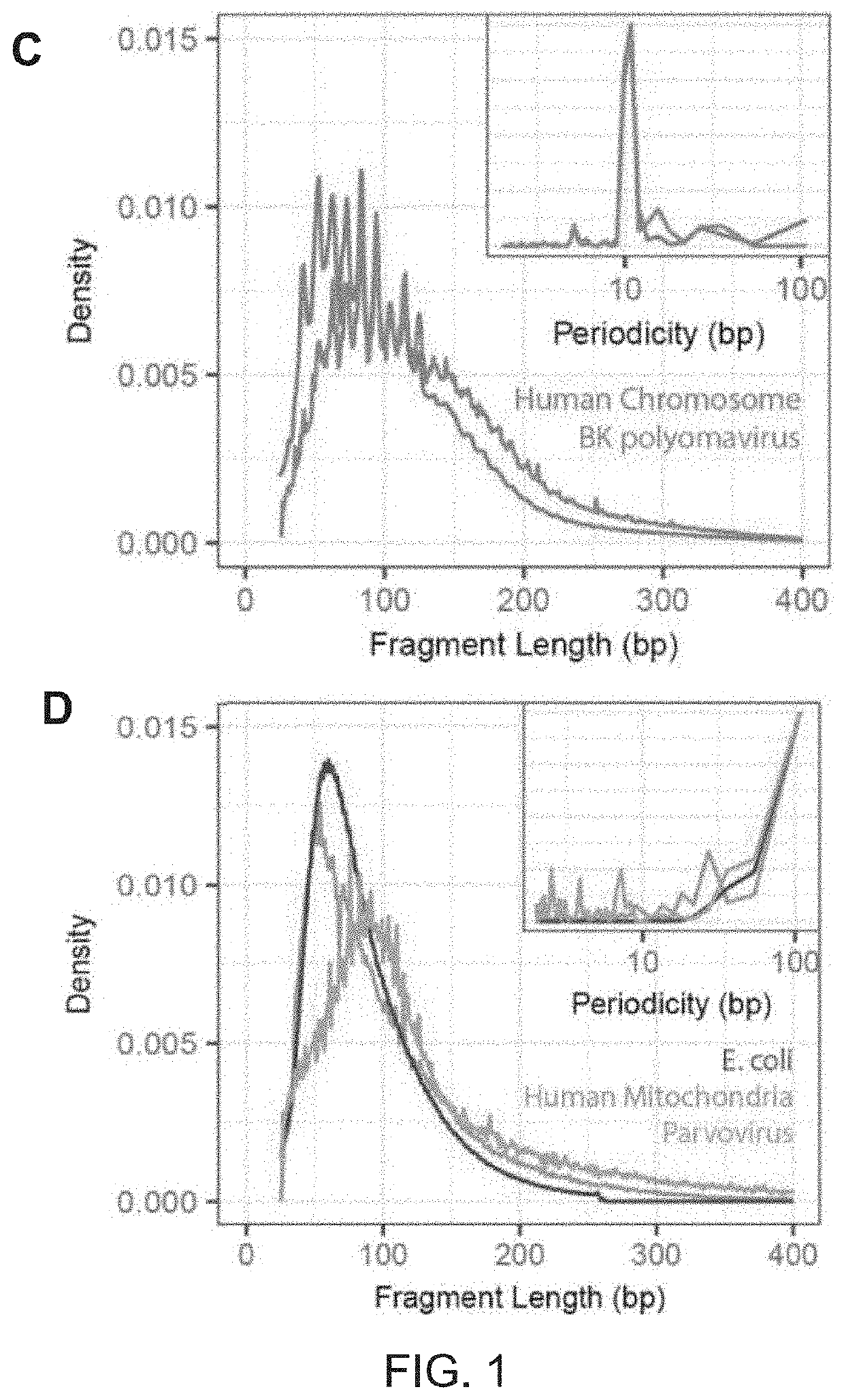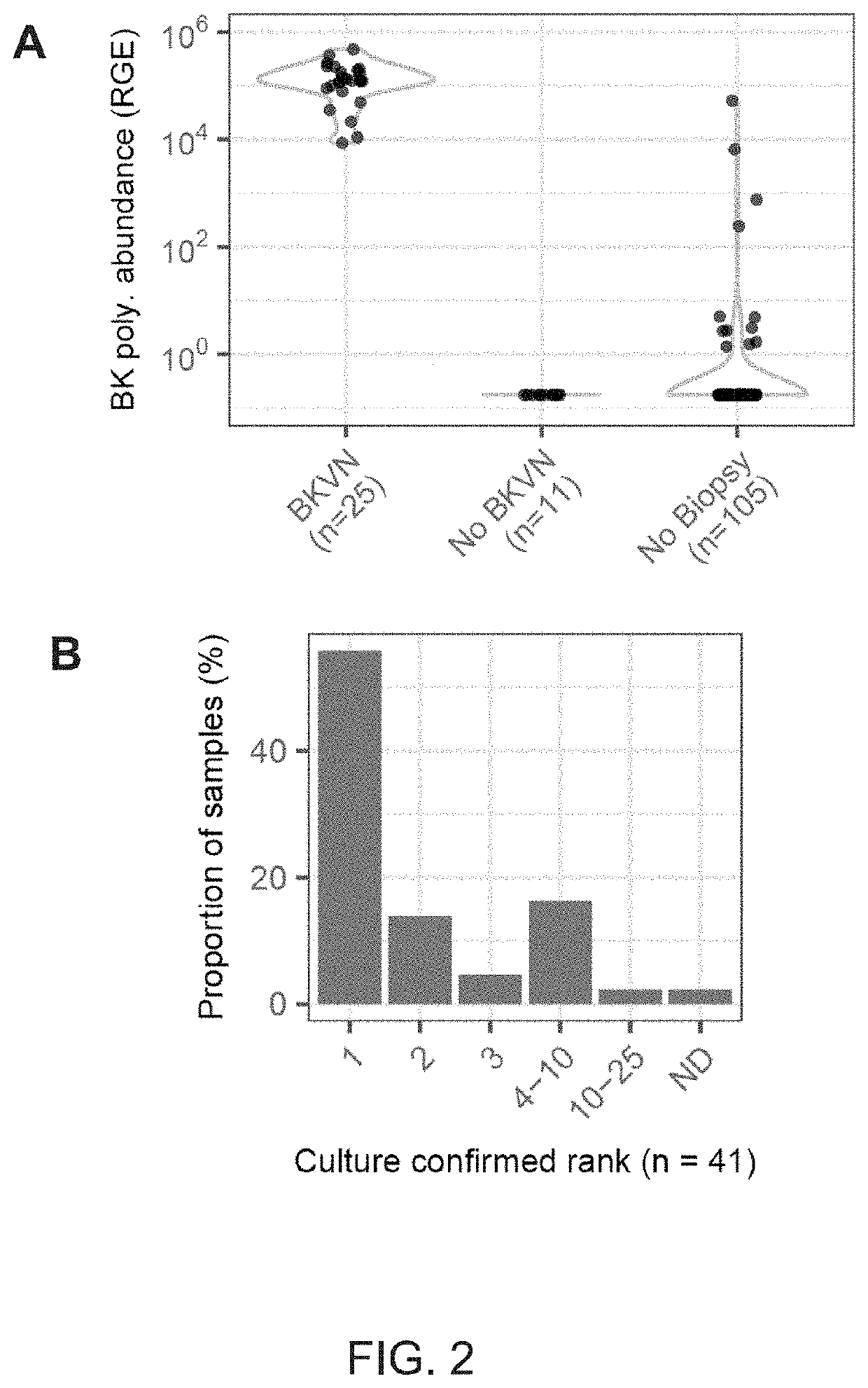Methods of detecting cell-free DNA in biological samples
a cell-free dna and biological sample technology, applied in combinational chemistry, biochemistry apparatus and processes, library screening, etc., can solve the problems of high degraded fragments and (partially) single-stranded fragments of dna in circulation that remain undetected, detection of cultivable organisms, and complications due to viral infection of the urinary tra
- Summary
- Abstract
- Description
- Claims
- Application Information
AI Technical Summary
Benefits of technology
Problems solved by technology
Method used
Image
Examples
example 1
and Methods
Study Design and Sample Collection.
[0093]113 (1 mL) urine samples and 10 (4 mL) urine samples from a cohort of kidney transplant patient. Urine was stored at −80° C. and was only thawed when ready for extraction. Cell-free DNA was extracted from one (BK virus-associated nephropathy (BKVN), Urinary Tract Infection (UTI) and UTI control) or four mL (BKVN control only) of urine using Qiagen Circulating Nucleic Acid Kit according to the manufacturer's instructions. Following extraction, libraries were prepared from extracted DNA using a single-stranded adapter ligation (P. Burnham et al., Sci. Rep., vol. 6, 27859, 2016).
cfDNA Extraction from Urine.
[0094]Urine supernatants are thawed and centrifuged. cfDNA was extracted using the QIAamp circulating nucleic acid kit (Qiagen Valencia, Calif.). The concentration of total cfDNA in the sample was measured using a QuBit fluorometer. cfDNA extracts were stored at −20° C.
[0095]To control for environmental and sample-t...
example 2
ell-Free DNA Extraction and Library Preparation
[0117]Urinary cell-free DNA is comprised of chromosomal, mitochondrial, and microbial cfDNA released from host cells and microbes in the urinary tract and of plasma-derived cfDNA that passes trans-renally from the circulation into urine. Urine can be collected non-invasively in large volumes, and therefore represents an attractive target for diagnostic assays. Compared to plasma DNA, relatively few studies have examined the properties and diagnostic potential of urinary cfDNA. The urinary environment degrades nucleic acids more rapidly than plasma resulting in fewer DNA fragments that are far shorter (J. Zhang et al., Clin. Chem., vol. 45, 1741-1746, 1999), consequently sequence analyses of urinary cfDNA have to date required relatively large volumes of urine (>10 ml) (Y.-H. Su et al., J. Mol. Diagn., vol. 6, no. 2, 101-7, 2004), (N. B. Y. Tsui, et al., PLoS One, vol. 7, no. 10, 1-7, 2012). Here, the inventors applied a single-stranded ...
example 3
Screening
[0119]The presence of cfDNA was assessed from bacterial and viral pathogens reported in clinical diagnostic workups. Here, previously described bioinformatic approaches were used to quantify non-human cfDNA sequences in the datasets (I. De Vlaminck, et al., Proc. Natl. Acad. Sci., vol. 112, no. 43, 13336-13341, 2015). Briefly, human sequences were identified by alignment of the sequences to the human reference and removed. Remaining sequences were BLAST-ed against a custom database of microbial reference genomes. The relative genomic representation of different species was estimated using GRAMMy (L. C. Xia, et al., PLoS One, vol. 6, no. 12, e27992, 2011). In order to directly compare the measured microbial abundance across samples and species, the representation of microbial genome copies was computed, relative to the representation of host genomes in the datasets, and expressed this quantity as relative genome equivalents (RGE).
[0120]An extremely high load of BK Polyomavir...
PUM
| Property | Measurement | Unit |
|---|---|---|
| Length | aaaaa | aaaaa |
| Electrical resistance | aaaaa | aaaaa |
| Fraction | aaaaa | aaaaa |
Abstract
Description
Claims
Application Information
 Login to View More
Login to View More - R&D
- Intellectual Property
- Life Sciences
- Materials
- Tech Scout
- Unparalleled Data Quality
- Higher Quality Content
- 60% Fewer Hallucinations
Browse by: Latest US Patents, China's latest patents, Technical Efficacy Thesaurus, Application Domain, Technology Topic, Popular Technical Reports.
© 2025 PatSnap. All rights reserved.Legal|Privacy policy|Modern Slavery Act Transparency Statement|Sitemap|About US| Contact US: help@patsnap.com



